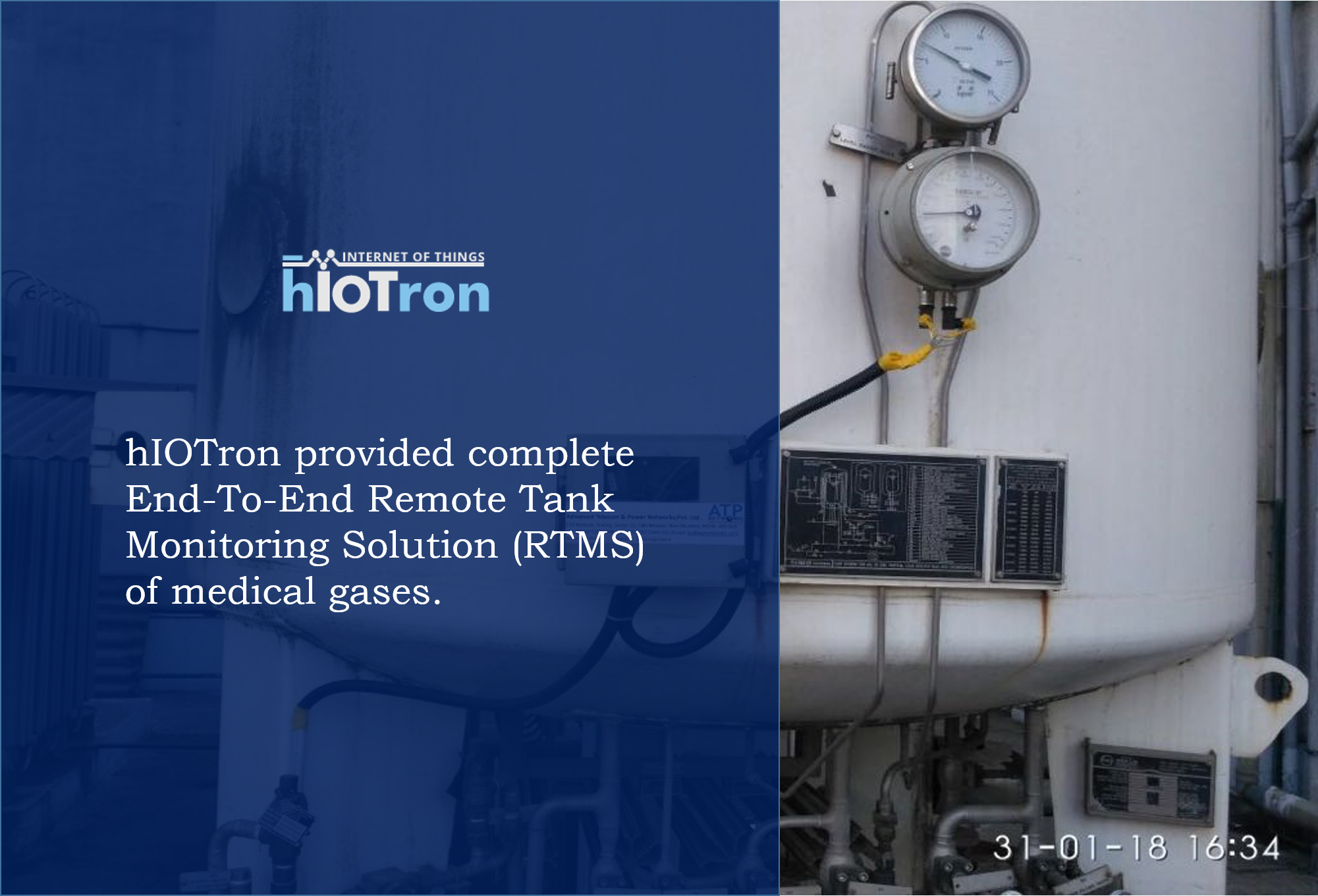Remote Tank Monitoring System in Healthcare
In Healthcare Medical gases play very crucial role, Medical gas systems in hospitals are, in a word, lifesaving. These assemblies supply piped oxygen, nitrous oxide, nitrogen, carbon dioxide, and medical air to hospital areas such as patient rooms, recovery areas, operating rooms, and more. It is of utmost important to keep medical gas systems up and running for the benefits of patients and those who are taking care of them.
There are main types of medical gas used in hospital environments.
- Oxygen: Oxygen is used when patients require supplemental oxygenation due to hypoxemia and hypoxia (insufficient oxygen in the blood).
- Nitrous Oxide: Nitrous Oxide, or laughing gas, is used as an analgesic, and as an anesthetic for pre-operative procedures. Nitrous oxide is delivered to the hospital in standard tanks and is supplied through the medical gas system at around 345 kPa, or 50 psi.
- Nitrogen: Nitrogen is often used to power up surgical equipment during various procedures and also used as a cryogen to freeze and preserve blood, tissue, and other biological specimens, and to freeze and destroy diseased tissue in dermatology and cryosurgery.
- Carbon Dioxide: Carbon dioxide is used to suspend or inflate various tissues and is used in laser surgeries. Most commonly, carbon dioxide is used in abdominal and thoracic surgeries, where the surgeon may need to move various organs to get to one particular area of the body.
There are many more like Medical Air, Helium/Heliox and Carbon Monoxide etc. it is necessary to establish a monitoring system to maintain a stable supply of medical gases. It should trace the gas flow from the source, through the piping, and to the various hospital outlets that use the gas. These systems should show the amount of gas remaining in the different tanks. It should also show the operating condition of the supply station, and the gas pressure applied to each area where the gas is in use.
“The Remote Tank Monitoring Solution (RTMS) of medical gases delivers complete tank transparency to health care providers. Utilizing end-to-end IoT hardware stack coupled with advanced pressure gauges and regulators, Remote Tank Monitoring Solution of medical gases solves the critical challenges of gases tank management.”
Remote Tank Monitoring Architecture

BENEFITS of RTMS
Tracking the location each & every tanks and their gases level, pressures, volumes time-based records benefited tank owners including improved tank filling, lower costs, lowered institutional risk, reduced inventory and re-allocation of work to the appropriate human resources. Some highlights include:
- Process Improvement – With instant notification (Mail or Message) threshold based or time based an oxygen tank is running low and the exact identification of that tank, healthcare operators can eliminate the risk associated with various procedures running on pipeline across hospital linked with that tank.
- Inventory Right-sizing – Because of inefficiencies in process and the wide array of individuals interacting with the medical oxygen inventory, hospitals and healthcare facilities often maintain substantially more medical oxygen inventory than they need. For many organizations electronic medical oxygen monitoring can result in a 30% or more reduction in inventory. Additionally, improved processes and electronic monitoring of pressure can result in a near elimination of unnecessary re-charges of full or mostly full tanks (a very common problem in healthcare).
- Lower costs – Elimination of unnecessary inventory and tank refills, the redistribution of responsibilities results in lower cost of maintenance, process improvements and procurement improvements can add up to big savings.
- Improved Care – Most importantly, remote medical oxygen monitoring leads to improved care by dramatically lowering the risk associated with unnecessary empty medical oxygen tanks.
SUMMARY
Deploying Remote Tank Monitoring Solutions save hospitals time and money, generate a rapid and significant return-on-investment, lowers risk and improves patient care. Designed to integrate into a new or existing installed tank system provide real-time insight into the location and state of your medical oxygen inventory.

